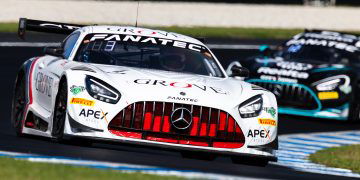
The framework for Formula 1's next generation of power unit has been approved by the FIA World Motor Sport Council including the introduction of a cost cap.
Discussions surrounding the direction of the sport's propulsion system have been underway for some time, including representatives outside the existing suppliers.
Initially set to be introduced for 2025, that has now been delayed by a year.
At its heart, the hopes of the new power unit are that they're simpler, cheaper, and offer a better environmental message.
Following the latest meeting of the World Motor Sport Council, the framework for the 2026 concept has now been approved.
That will see the basic 1.6-litre six-cylinder internal combustion unit format maintained, with an increase in electrical power to 350kW – a significant increase over currently levels (around half that figure).
A power unit specific cost cap will be introduced, while the heat-element of the energy recovery system (MGU-H) will be done away with.
Going forward, F1 engines will therefore use 100 percent sustainable fuel, with a greater focus on efficiency noted as key objectives for the new format.
As soon as next year, F1 will move to E10 fuel, as announced by the sport's commercial rights holders in October.
It's hoped the new regulations will attract newcomers to the sport, with the Volkswagen Audi Group having been involved in discussions and heavily linked to the sport for some time.
Preservation of the ‘show' is also listed as a paramount consideration, with specific mention of “powerful and high-revving power unit, car performance, sound, drivers' ability to race, avoiding excessive differentiation.”
It was noted that a more detailed document of the 2026 power unit regulations will be developed and submitted to the World Motor Sport Council in early 2022.
A freeze on power units is set to come into force from the start of next season until the introduction of the next generation comes into force in 2026.










































